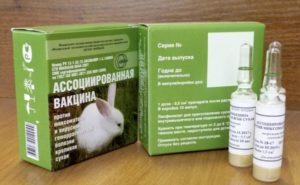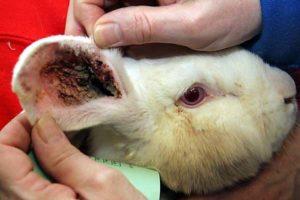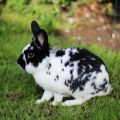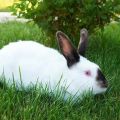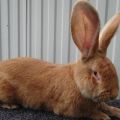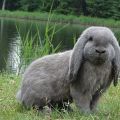Description and characteristics of rabbits of the New Zealand breed, their history and care
The New Zealand universal rabbit has rightfully taken pride of place on the farms of experienced and novice livestock breeders. It is difficult to find a more useful creature. The pet is widely known as a reliable source of tasty, lean meat and valuable fur. The animal does not require round-the-clock care and invariably pleases its owners with its unpretentiousness and docile nature. Even a debutant can handle breeding fluffy beauties.
Origin story
Contrary to the misconception of many breeders, the rabbit is not related to New Zealand. The charming animals owe their appearance to American breeders. Enterprising farmers sought to combine the best qualities in one individual: a fleshy body and a beautiful skin. By crossing a wild New Zealand rabbit with a Belgian hare, specialists obtained the first New Zealand rabbit. The breed received official recognition in 1910.
In the future, eared beauties were repeatedly crossed with representatives of the best breeds. The pedigree of modern New Zealanders keeps references to the relationship with the Flemish giant, the giant chinchilla and the American white. Since the end of the 20th century, New Zealand beauties have received worldwide recognition.
Description and characteristics of the breed
Novice breeders often choose New Zealand rabbits for self-breeding. The animal is distinguished by a strong, fleshy back, well-developed strong legs and a short neck. The average height of a pet is 48 cm. A rabbit's weight rarely exceeds 5 kg. The plump body of the rabbit is covered with thick fur. Depending on the variety, there are beauties of white or reddish-red color.
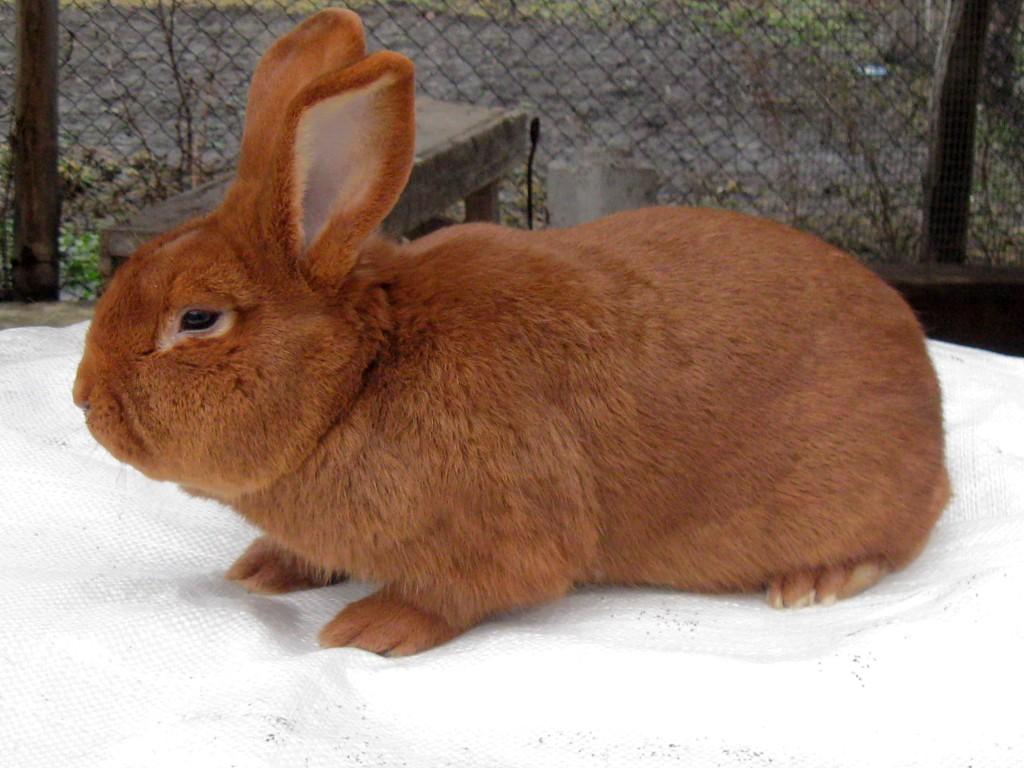
Pros and cons of New Zealand rabbits
The popularity of New Zealanders among farmers is not surprising. Broilers have many advantages:
- Females are fertile, each litter brings the owner up to 10 newborns.
- Rabbits are rapidly gaining weight.
- The breed is versatile. Animals regularly serve as suppliers of skins and meat.
- Thanks to the characteristics of the animals, the costs are immediately paid off.
The disadvantages of the New Zealand breed include the high cost of breeding individuals.
Varieties
Despite the general name of the breed, rabbits are divided into 2 types:
- reds, called by NZK specialists (New Zealand reds);
- whites, known as nzb, (New Zealand whites).
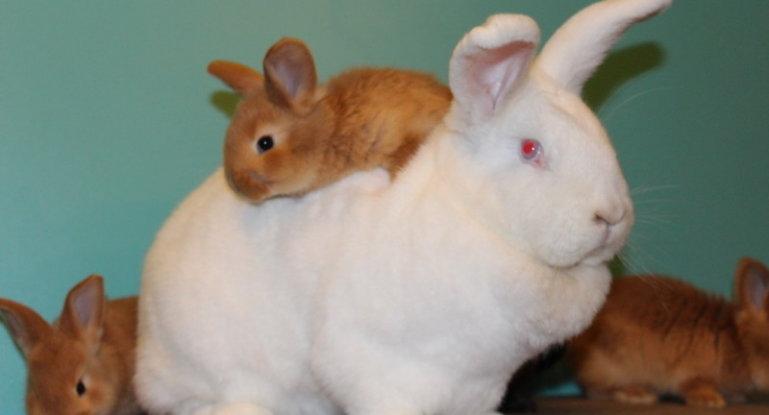
Owners of a red-orange suit are much smaller than their snow-white counterparts. With good care, an adult grows up to 49-51 cm. The average weight of a pet is 3.9-4.5 kg.The animal has a strong body build. Its small head is crowned with a pair of straight ears. The velvety rabbit fur coat is painted in a rich brick-red color. The area of the eyes, mouth, thighs, abdomen and tail of the animal is marked with a lighter shade. Red New Zealander is unpretentious and easily adapts to any conditions of detention.
The white representative of the New Zealanders breed grows up to 47 cm. The female is slightly larger than the male and is able to grow up to 49 cm. A well-knit body, short neck and thick paws indicate the strength of the animal. A short, rounded muzzle and small reddish eyes add charm to the pet.
The main decoration of the New Zealander is the soft, thick, silky white wool. The breed is indicated by the presence of a silvery undercoat and a correct bite. Albinos are distinguished by a calm, docile disposition and unpretentiousness.
Black New Zealander is rare in farms, so experts do not mention him. Thanks to the shiny charcoal coat, the long-eared handsome man is often confused with the representative of the Viennese breed.
The subtleties of keeping and caring for animals
A spacious cage is suitable for keeping pets. In their new home, animals must move freely. The ceiling in the cage is made high so that, if necessary, the rabbit can stand on its hind legs.

Pets cannot stand the heat and loud sounds, so the dwelling is installed in a secluded corner protected from bright sunlight. The comfortable temperature for New Zealanders is 15-16 degrees. Indoors, rabbits should be provided with fresh air. This will help prevent an outbreak of bacterial infection.
It is advisable to equip a cage for New Zealanders with a mesh floor. This trick will not hurt the owners of paws densely overgrown with wool, but it will make life easier for the owners. Cleaning up waste from a mesh cage is much easier than cleaning a traditional rabbit dwelling.
The cage is equipped with a piece of wood for grinding teeth, a convenient feeder and a drinker. Animals need constant access to water and food. Each dwelling contains several rabbits of the same sex and age. A house is installed in a cage intended for females. In it, the rabbit will feed the offspring. Once every 10 days, the pets are carefully examined, combed out and the mats are neatly cut.
Nuances of nutrition
New Zealanders are unpretentious in their food, but need a balanced diet. The daily ration is made up based on the time of year, age, sex and life cycle of the pet.

The food of rabbits should include succulent feed (silage, carrots, beets), roughage (straw, hay, twigs of willow and fruit trees), concentrates (grain mixture, compound feed), green feed (fresh grass, cereals and legumes). Vegetables and fruits are introduced into the diet of animals in small pieces, gradually. Otherwise, pets risk getting sick. Drinking water is often changed.
How to breed rabbits correctly
Already 5 months after birth, the females are ready for mating. Males reach mating age a little later. They are ready to breed at 7 months of age. Individuals with excess weight or drooping ears are not allowed to mate.
The readiness of the female for the appearance of offspring is calculated by age and behavior. In anticipation of the offspring, the rabbit equips the nest, lining it with her own down. Each time a young female brings 8-9 young rabbits. Cubs are born tiny, their weight does not exceed 45 g.
Rabbits of the New Zealand breed are natural-born mothers, they conscientiously feed the offspring until the babies are removed. Thanks to the fatty breast milk, newborn rabbits gain weight rapidly.Already by 2 months of age, the average weight of a calf is 2 kg. By 3 months, the animal is gaining from 3 to 3.2 kg.
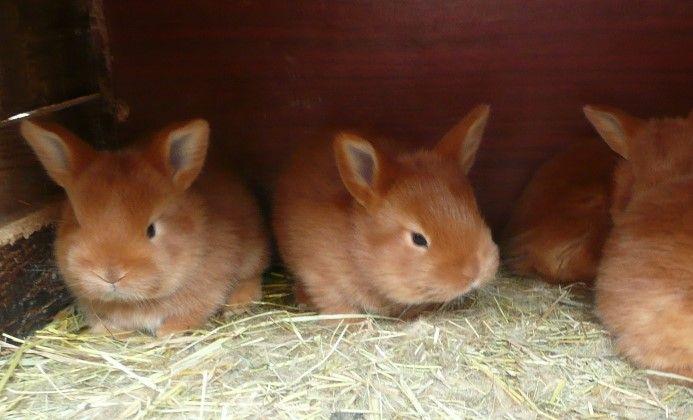
Diseases and vaccinations
A frivolous attitude towards compliance with the rules of keeping pets often leads to a sad outcome. New Zealanders can fall prey to an insidious disease called myxomatosis. Tumors appear on the head and paws of the animal. Over time, they merge into one swelling. Small rodents and insects carry the infection. Unfortunately, sick animals cannot be treated. All infected rabbits are destroyed. Cages, drinkers and feeders are thoroughly disinfected.
Coccidiosis lies in wait for young individuals. Pets aged 2-4 months are at risk. Rabbits suffer from diarrhea, lethargy and yellowing of the mucous membranes. Only a veteran can cope with the problem.
For adult rabbits, a viral hemorrhagic disease is a danger. Animals lose their appetite, become lethargic. The disease is accompanied by convulsions and involuntary throwing back of the head. Unfortunately, there is no cure for the misfortune. All infected rabbits will have to be destroyed. A lot of trouble is given to the owners by such unpleasant diseases as rhinitis (treated with furacilin solution) or infectious stomatitis. Preventive measures and routine vaccination will help to avoid dangerous diseases. Clean cells and good nutrition are the key to the health of eared pets.
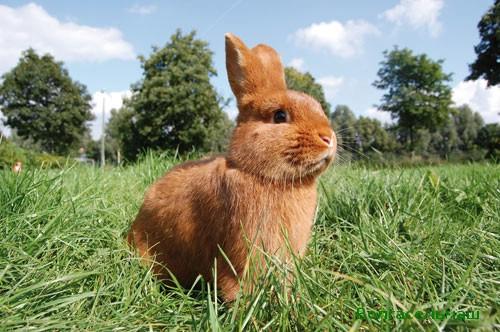
What to look for when choosing?
The right choice of animals for further breeding is the main task. A mistake can ruin all the undertakings of a future livestock breeder. Experienced farmers advise purchasing a rabbit at the age of 3 months. A grown-up pet no longer depends on mother's milk and will easily get used to new conditions of detention.
A healthy animal pleases the eye with its fatness, shiny silky fur and clean eyes. The mobility and curiosity of the pet speaks of good condition. A conscientious seller provides the buyer with information about the vaccinations and the diet of the animals.
